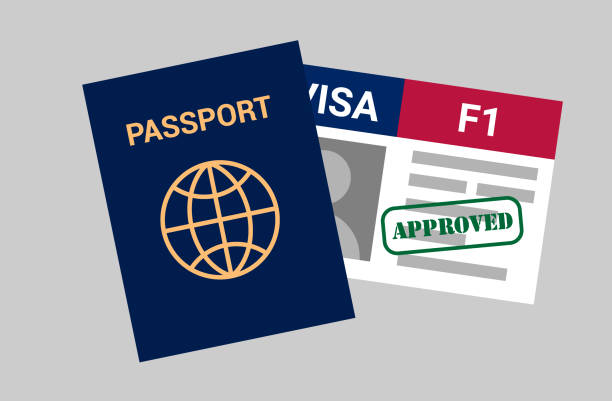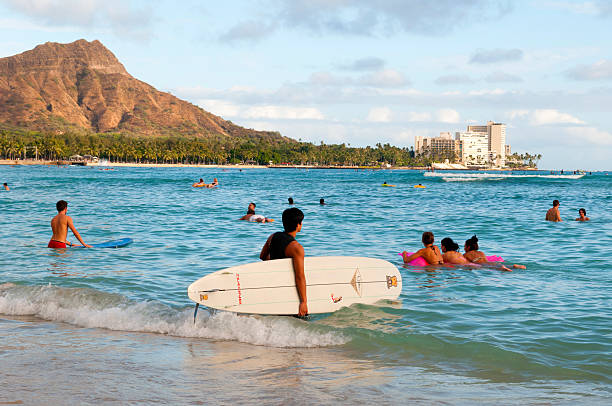Do international student need a visa to Hawaii from the USA?
With its stunning landscapes, vibrant culture, and relaxing atmosphere, Hawaii is a dream destination for many. However, the big question for foreign students is, do international student need a visa to Hawaii from the USA? If you’re an international student currently studying in the U.S., you may have questions about whether you need a visa to travel there. The good news is that traveling to Hawaii as an international student is generally straightforward, but there are a few important factors to consider. Let’s break it down!
Understanding Visa Requirements for Hawaii
Hawaii is a U.S. state, and therefore, the same visa requirements that apply to travel within the mainland U.S. also apply to travel to and from Hawaii. This means that international students do not need a separate visa specifically for Hawaii. The U.S. visa system governs all travel to and from U.S. territories, including Hawaii.
The Role of the U.S. in Hawaii’s Visa Requirements

Because Hawaii is a U.S. state, immigration policies are determined by U.S. law. As such, international students visiting Hawaii from the mainland U.S. don’t need a new visa or special documentation. However, they must comply with the same visa requirements and conditions that apply to their stay in the U.S. The key takeaway here is that your current U.S. visa is sufficient for travel to Hawaii.
Who Qualifies as an International Student?
Before we dive into travel specifics, let’s clarify what it means to be an international student.
Definition and Classification of International Students
An international student is a person who has come to the U.S. from another country to study. This student holds a visa that allows them to attend an educational institution in the U.S. The most common visa types for international students are the F-1 (academic students), J-1 (exchange visitors), and M-1 (vocational students).
Distinction Between International and Domestic Students
The distinction between international and domestic students is significant in the context of visa requirements. Domestic students are U.S. citizens or permanent residents (green card holders), and they don’t need a visa for domestic travel, including to Hawaii. International students, on the other hand, must ensure that they maintain valid visa status and comply with U.S. immigration rules when traveling.
Traveling Within the USA as an International Student
For international students already studying in the U.S., traveling between states, including to Hawaii, is generally not an issue, but there are a few things you need to keep in mind.
Internal Travel Policies for International Students
If you’re already in the U.S. on an F-1, J-1, or M-1 visa, you’re free to travel within the country. This includes flying to Hawaii, as it’s part of the United States. However, you must ensure that your visa status is up to date and that you have the proper documentation with you during your travels.
Key Documents Required for Travel
When traveling to Hawaii, you’ll need:
- A valid passport.
- Your U.S. visa (either F-1, J-1, or M-1).
- Your I-20 (for F-1 students) or DS-2019 (for J-1 students), which indicates your current enrollment status.
- Proof of residency or legal status in the U.S.
While these documents are typically needed for international travel, they’re also required for your domestic travels, including to Hawaii.
U.S. Visas and Their Relevance to Hawaii

Explanation of F-1, J-1, and M-1 Visas
The F-1 visa is the most common visa for international students attending academic institutions in the U.S. The J-1 visa is typically for students participating in exchange programs, and the M-1 visa is for students in vocational training programs.
These visa categories are not specific to any state. The conditions of your visa apply to travel across all U.S. states, including Hawaii. So, if you’re an international student with a valid U.S. visa, you can visit Hawaii without needing any additional permissions or paperwork.
Applicability to Hawaii
If you hold a valid F-1, J-1, or M-1 visa, you are allowed to travel freely within the U.S., including to Hawaii. There are no extra visa requirements for students specifically traveling to Hawaii, as the visa conditions are governed by the U.S. government and apply uniformly to all U.S. states.
Common Misconceptions About Hawaii’s Visa Rules
Misunderstandings About Visas for U.S. Territories
Some international students mistakenly believe that traveling to U.S. territories like Hawaii requires a special visa. This is not true. Hawaii is a state, not a separate territory, and the visa rules for travel to Hawaii are the same as those for the mainland U.S.
Dispelling Myths
One common myth is that international students must obtain a “Hawaii visa” before traveling there. This is completely false. As long as you are maintaining legal student status in the U.S., your visa will cover travel to Hawaii.
Documentation Required for Traveling to Hawaii
Though no additional visa is required for Hawaii, international students still need to carry certain documents for domestic travel.
Passport Requirements
International students must always have their passport with them when traveling, even within the U.S. This is especially important if you need to prove your identity or visa status to authorities.
Proof of Residency or Visa Status
Make sure you also carry your I-20 or DS-2019 (depending on your visa type) and any other documents that prove your legal status in the U.S. This is important if you are ever questioned by authorities about your student status during travel.
ALSO READ:
| Can you have f1 and m1 visas? |
| Why do international students have restricted work hours? |
| Are international students eligible for first generation college scholarships |
Special Considerations for International Students
I-20 Form Requirements
International students holding an F-1 visa must carry an I-20 form. This document is issued by your U.S. school and confirms that you are enrolled as a full-time student. Your I-20 is crucial for travel, so make sure it’s up-to-date and signed by your designated school official (DSO) before your trip to Hawaii.
SEVIS Registration
SEVIS (Student and Exchange Visitor Information System) is a U.S. government database that tracks international students in the country. Your SEVIS status must be active, and your school must be in compliance with SEVIS reporting requirements. This is important not just for traveling but for maintaining your visa status.
Exceptions and Unique Situations
Students from Visa-Exempt Countries
Some international students come from countries that have a visa waiver agreement with the U.S. In this case, these students may not need a visa to study or travel within the U.S. However, even for such students, they must have the correct travel authorization (such as ESTA) and be enrolled in the correct visa-exempt program.
Dual Citizens or Green Card Holders
If you hold dual citizenship or are a green card holder, you do not need a student visa. You can travel freely within the U.S. (including to Hawaii) using your U.S. passport or green card.
Exploring Hawaii as an International Student

Benefits of Visiting Hawaii
Hawaii is an amazing destination for students, offering opportunities to explore unique cultural landmarks, relax on beautiful beaches, and enjoy a diverse natural landscape. It’s a perfect getaway for international students to unwind and experience something new.
Top Attractions for Students
Some must-see attractions in Hawaii include:
- Waikiki Beach
- Pearl Harbor
- Volcanoes National Park
- Hanauma Bay
- The Na Pali Coast
It’s a great way to make the most of your U.S. student experience!
How to Prepare for Travel to Hawaii
Step-by-Step Checklist
- Check the validity of your passport and U.S. visa.
- Confirm that your I-20 or DS-2019 is signed and up-to-date.
- Pack your travel documents, including any proof of enrollment.
- Book your flight to Hawaii and check your baggage and flight requirements.
- Review Hawaii’s local laws and regulations before your trip.
Tips for Smooth Travel
- Always keep your important documents in your carry-on.
- If you’re unsure about any requirements, contact your school’s international student office.
- Ensure your visa status is in good standing.
Navigating U.S. Customs and Border Protection
Arrival Procedures
When arriving in Hawaii, you’ll go through the same customs and immigration process as you would for any U.S. state. Be prepared to present your passport, visa, and relevant documents.
What to Expect During Customs Checks
Customs officers may ask about the purpose of your visit and ask to see your travel documents. Be polite and cooperative. As an international student, you’ll likely be asked to show your I-20 or DS-2019, and possibly proof of your U.S. enrollment.
Rules and Regulations for Staying in Hawaii
Maintaining Visa Compliance
While in Hawaii, it’s important to maintain your visa status. This means you should continue to be enrolled in your program of study and adhere to the terms of your visa, including any work restrictions.
Restrictions and Permissions
As an international student, you cannot engage in employment in Hawaii unless it is authorized under your visa type (such as on-campus work or an authorized internship).
What Happens if You Travel Without Proper Documentation?

Consequences of Non-Compliance
Traveling without the proper documentation can result in serious consequences, including being denied entry or facing deportation. Always ensure that you have the correct documentation when traveling to Hawaii or any other U.S. state.
How to Resolve Travel Disputes
If you face any issues while traveling, contact your school’s international student office or seek legal advice immediately. They can help clarify your situation and ensure that your rights are protected.
Common FAQs About Traveling to Hawaii as an International Student
Do I need a separate visa for Hawaii?
No, Hawaii follows the same visa rules as the mainland U.S. You don’t need a separate visa.
Can I travel to Hawaii if my visa is about to expire?
It’s crucial to keep your visa status current. If your visa is close to expiring, make sure you renew it before traveling.
Do I need a U.S. visa if I’m traveling from another country to Hawaii?
Yes, international students traveling to the U.S. from other countries will need a valid U.S. visa.
Resources for International Students
- Your school’s International Student Office is the best resource for travel-related questions.
- U.S. Customs and Border Protection can provide information on travel policies.
- SEVIS is a good tool for checking your student status.
Conclusion

Traveling to Hawaii as an international student is an exciting opportunity, and thankfully, it doesn’t require additional visas or complicated procedures. By ensuring you maintain your visa status, carry the proper documentation, and follow U.S. travel regulations, your trip to Hawaii can be smooth and enjoyable. Plan ahead, stay informed, and enjoy your time in this beautiful U.S. state!







